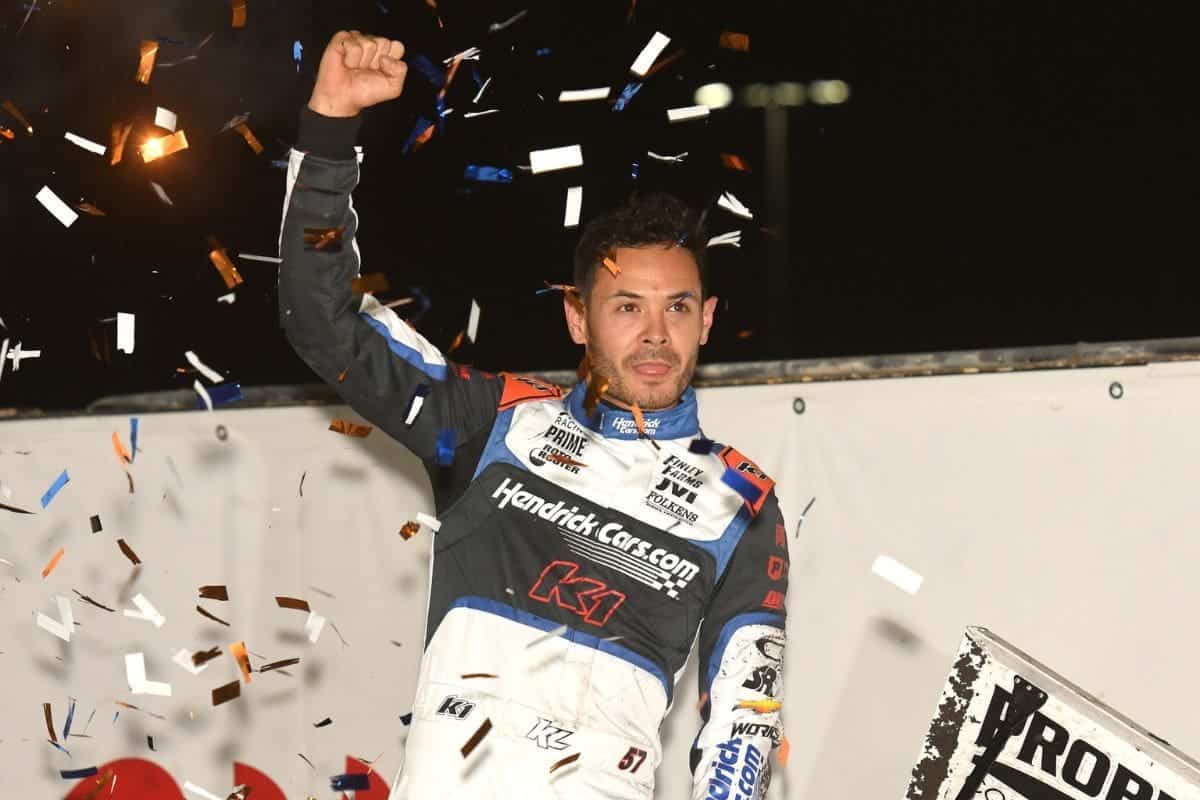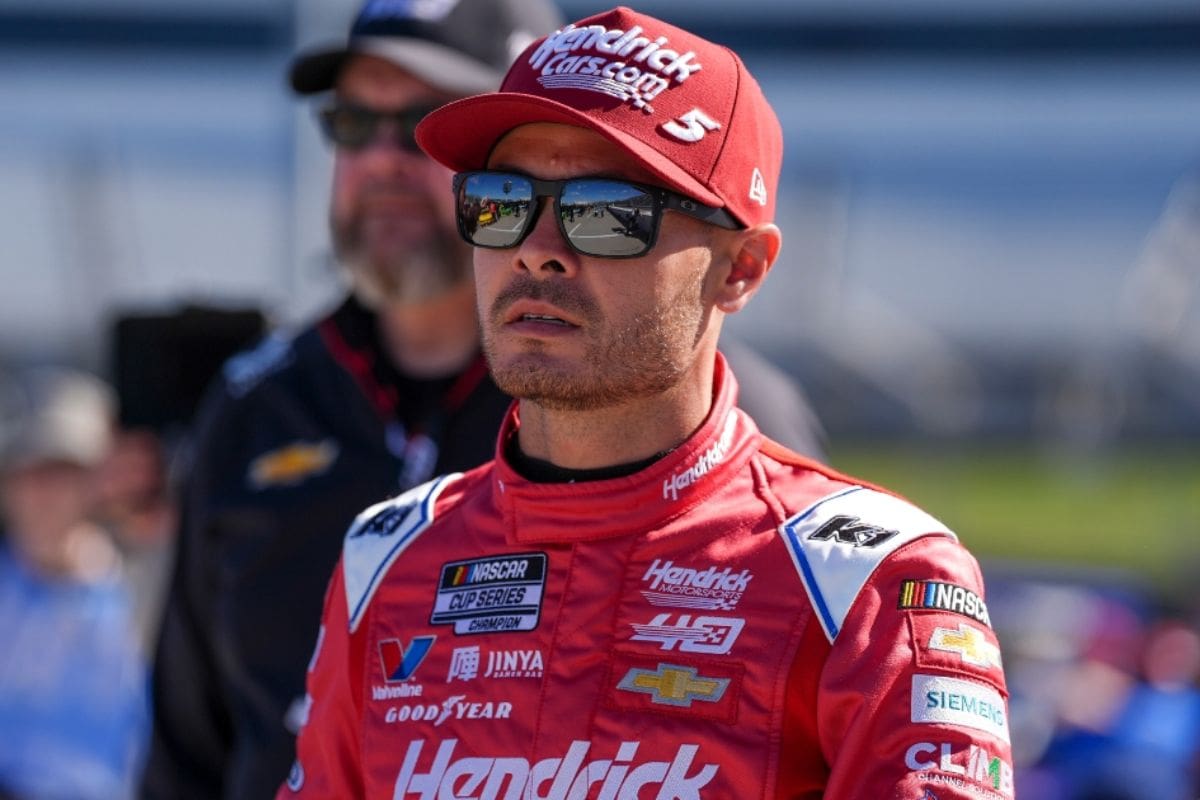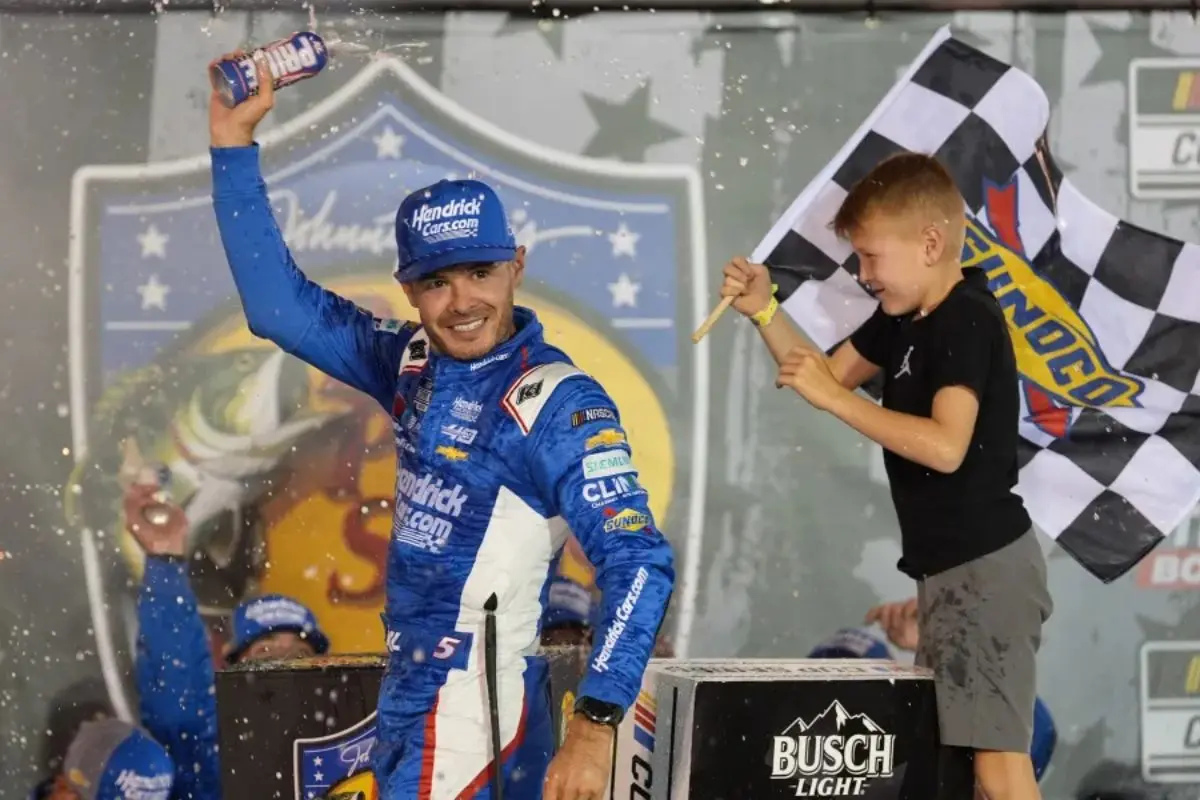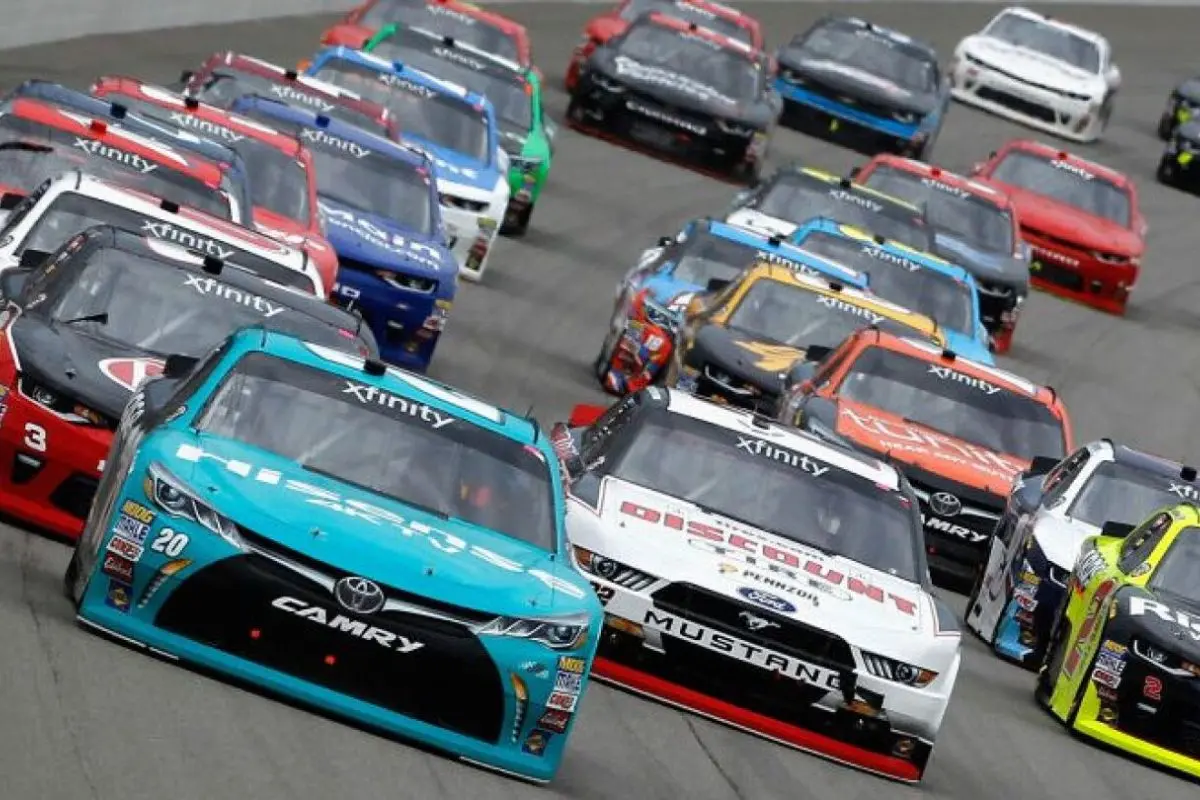Kyle Larson’s Dominance at Bristol: Kyle Larson‘s recent performances at Bristol Motor Speedway raise intriguing questions about the interplay between driver skill and tire technology. His remarkable ability to navigate the track effectively coincides with notable adjustments in Goodyear’s tire compounds, which appear to provide improved grip and durability on Bristol’s notoriously abrasive surface. This alignment of Larson’s driving skill with the tire performance could suggest a considerable advantage, particularly in the context of the ongoing NASCAR playoffs. As the season progresses, one must consider whether Larson’s success is a product of his talent, the tire advancements, or a combination of both.
Key Highlights
- Kyle Larson’s recent victory at Bristol showed his exceptional racing strategy and tire management skills, amplified by Goodyear’s tire performance changes.
- Goodyear’s adjustments allowed for better handling on Bristol’s abrasive surface, enabling drivers to maintain higher speeds without excessive tire management.
- Larson utilized insightful feedback from practice sessions to develop a proactive tire management strategy, reducing the need for caution during the race.
- The unique tire dynamics helped Larson regain confidence after earlier performance struggles, positioning him as a strong contender in the championship chase.
- Larson’s success at Bristol, combined with Goodyear’s tire improvements, significantly enhances his competitive edge in upcoming races, including Kansas Speedway.
Kyle Larson’s Dominant Win at Bristol
Kyle Larson’s recent performance at Bristol Motor Speedway can be characterized as a masterclass in racing strategy and execution. Securing his fifth victory of the 2024 season, Larson highlighted not only his driving skill but also the remarkable coordination of the #5 team in maneuvering through the complexities of tire management.
From the outset, Larson exhibited an aggressive yet calculated approach, swiftly moving to contend for the lead while being acutely aware of the potential tire wear challenges that could arise later in the race.
In the opening stages, Larson targeted his teammate, Alex Bowman, and executed a well-timed pass to seize control. This moment marked a turning point, as Larson’s ability to maintain pace and manage his tires became evident.
Throughout the race, he effectively balanced speed and conservation, mitigating the risks typically associated with a high-stakes environment like Bristol.
Despite the looming threat of tire degradation, Larson’s dominance was emphasized by the uninterrupted green flag conditions that allowed him to establish a commanding lead. His tactical foresight and precise execution not only minimized tire strain but also facilitated a rhythm that left competitors struggling to keep pace.
As Larson crossed the finish line, the celebration with his son Owen highlighted the personal significance of the win, summarizing the emotional and competitive narratives that define NASCAR racing.

Unique Strategy and Tire Feedback
Utilizing insightful feedback from practice sessions, the #5 team formulated a unique strategy that greatly influenced their approach to tire management during the race. Kyle Larson’s preference for long green flag runs was essential in shaping this strategy, particularly in the context of Bristol’s challenging surface. Unlike many competitors who struggled with excessive tire fall-off, Larson’s ability to communicate detailed observations from practice allowed the team to anticipate tire performance under race conditions effectively.
Kyle Larson knew more than many that the tires weren't going to wear at all Saturday night. And he was happy with that — he liked the racing (obviously, yes, he led most of the laps so it's not surprising, but he explains why). pic.twitter.com/L4nGoqsSfE
— Bob Pockrass (@bobpockrass) September 22, 2024
The previous spring race highlighted the potential pitfalls associated with tire wear, as drivers faced notable degradation after 50-60 laps. This experience emphasized the necessity for a thorough understanding of tire dynamics, prompting the #5 team to adopt a proactive rather than reactive stance. By analyzing Larson’s feedback, they recognized that while tire management would be vital, the anticipated tire performance for the playoff race would not necessitate the same level of caution as before.
The selection of a similar Goodyear tire compound signaled NASCAR’s intent to foster competitive racing. However, it was Larson’s unique insights that empowered the #5 team to strategize effectively around this expectation.
Change in Goodyear Tire Performance
The recent change in Goodyear tire performance at Bristol greatly altered the dynamics of the race, drawing immediate attention from drivers and teams similarly. This season, the Goodyear rubber displayed a notably different reaction to the abrasive concrete surface compared to prior events, especially the spring race. As Kyle Larson noted, by lap 10 in practice, he observed a lack of marbles on the track, indicating a vital shift in tire degradation and grip levels.
“I would say probably by lap 10 in practice. You’re visually scanning the racetrack; you’re looking for marbles and stuff, and I didn’t see any. So I was like, Alright, happy for sure.” – Larson
Larson’s perspective is especially enlightening; he expressed a preference for a race where drivers can operate at full throttle rather than one constrained by tire management. This sentiment highlights a broader trend among competitors who thrive in conditions that allow for aggressive driving. The absence of the troublesome marbles typically associated with tire wear meant that drivers could maintain higher speeds consistently throughout the race, enhancing the general excitement and competitiveness on track.
“I know you guys think the race in the spring was better, but as a driver, I would way rather run 100 percent all night long for 500 laps than run 50 percent. I grew up racing different stuff where you do push the whole race, but I think that version of Bristol is way more exciting.” – Larson
Moreover, the ability to race without the typical constraints of tire management not only influenced Larson’s driving style but also allowed for a more engaging experience for fans. The shift in tire performance seems to have enabled a more straightforward racing strategy, allowing skilled drivers like Larson to demonstrate their talents more fully.
Fundamentally, Goodyear’s adjustments have revolutionized the short track experience, providing a platform where drivers can push their limits and deliver thrilling performances, thereby enriching the narrative of competitive racing at Bristol.
A Much-Needed Victory for Larson
Following the notable changes in Goodyear tire performance at Bristol, which allowed for a more aggressive driving style, Larson seized the opportunity to secure a much-needed victory. This win was particularly important for Larson and his team, as it came after a challenging stretch that included lackluster performances and a particularly disheartening start to the playoffs.
After clinching victory at the Brickyard 400, Larson found himself struggling to regain that same race-winning speed, managing only a single top-five finish over his next six races. The situation reached a critical point following disappointing outings at Atlanta and Watkins Glen, where Larson faced a freak accident and an inability to advance in the field, respectively.
This series of events could have derailed the momentum he had built earlier in the season, but the changes in tire dynamics at Bristol provided the perfect backdrop for a resurgence. Larson’s adept handling of the new tire characteristics not only demonstrated his skill as a seasoned driver but also rejuvenated his confidence and that of his team.
As Larson crossed the finish line, it marked not just a victory but a crucial moment in his season. With this win, Larson reestablished himself as a formidable challenger, allowing him to recalibrate his focus toward the broader goal of chasing the championship.
Larson’s Championship Prospects
With a vital victory at Bristol behind him, Kyle Larson has positioned himself as a serious contender in the NASCAR playoff landscape. His win not only reinforced his driving skill but also highlighted the strength of the #5 team, providing a notable psychological advantage as they head into the Round of 12. Larson’s ability to capitalize on the bonus points accrued throughout the regular season has further solidified his standing, currently leading the points with a 15-point advantage over Christopher Bell.
As Larson prepares for the upcoming race at Kansas Speedway, where mile-and-a-half tracks have historically favored him, the stakes could not be higher. A victory at Kansas would not only boost his points lead but also serve as a powerful statement regarding his championship ambitions. The table below demonstrates key statistics that emphasize Larson’s current form and potential path in the playoffs.

News in Brief: Kyle Larson’s Dominance at Bristol
Kyle Larson’s recent success at Bristol Motor Speedway highlights the vital interplay between driver skill and tire performance. The modifications in Goodyear’s tire dynamics not only allowed for sustained speed but also mitigated traditional concerns associated with marbles. This tactical advantage, coupled with Larson’s adept tire management, positions him as a prominent contender in the NASCAR playoffs. As the competition intensifies, Larson’s ability to utilize these factors will be essential in determining his championship prospects.
ALSO READ: Kyle Larson Wins Bass Pro Shops Night Race – Most Laps Led in a NASCAR Race


